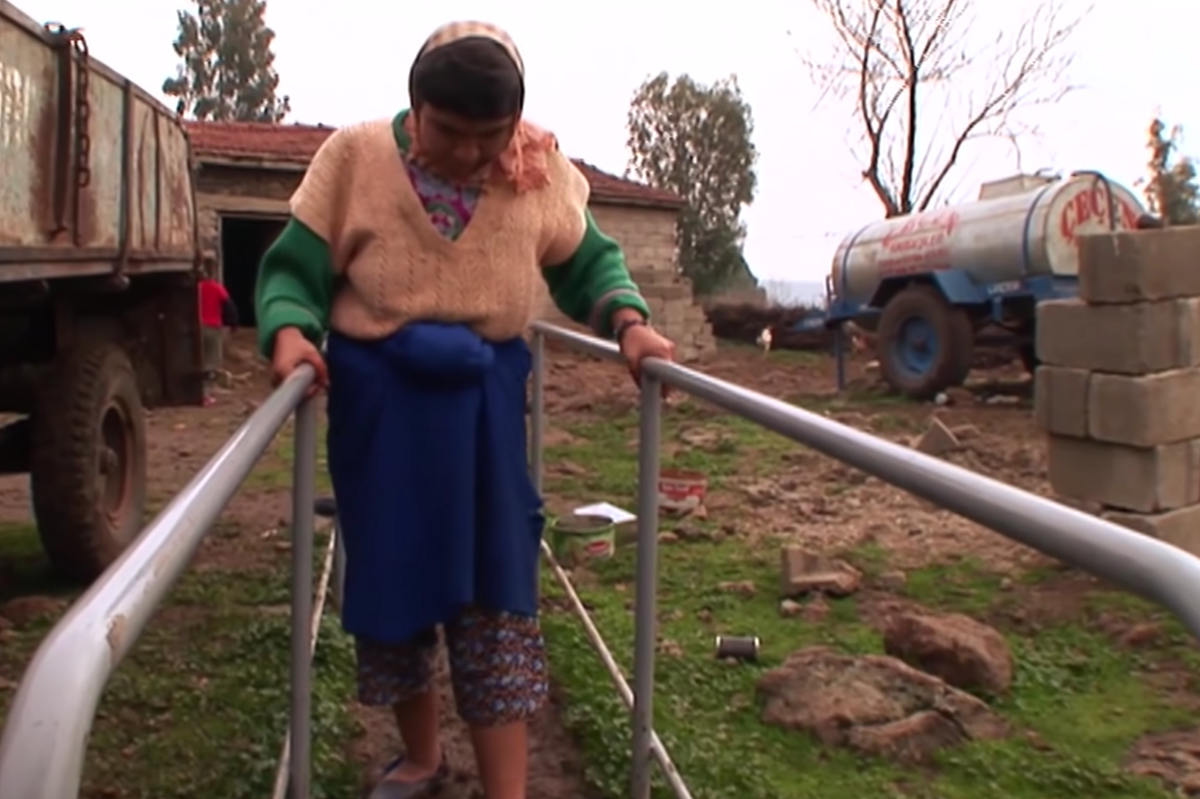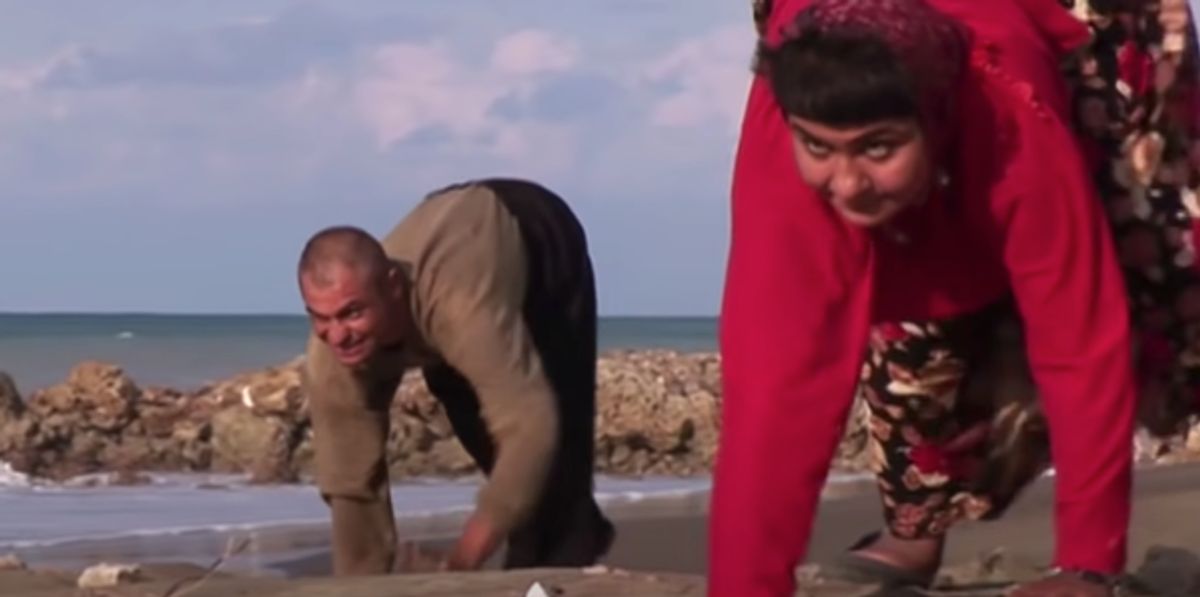All families have their own quirks and habits, but one group of relatives has such a unique trait that scientists have branded them a total anomaly of the human species.
The Ulas family has been the subject of evolutionary fascination for years after they were discovered in a remote village in Turkey walking on all fours.
Back in the early 2000s, a scientific paper was published on five of the Ulas siblings and their strange bear crawl-style of movement, with experts divided over the cause of the abnormality.
In the years following the paper’s publication, evolutionary psychologist Professor Nicholas Humphrey, of the London School of Economics (LSE), travelled to Turkey to meet with the extraordinary family.
The Ulas mother and father had a staggering 18 children, however, of these, only six were born with quadrupedalism (walking on all fours), which has never been seen before in modern adult humans.
The skin on the palms of their hands is as thick as it is on their feet60 Minutes Australia
“I never expected that even under the most extraordinary scientific fantasy that modern human beings could return to an animal state,” Humphrey told 60 Minutes Australia, which made a documentary about the family back in 2018.
“The thing which marks us off from the rest of the animal world is the fact that we’re the species which walks on two legs and holds our heads high in the air,” he added.
“Of course, it’s language and all other sorts of things too, but it’s terribly important to our sense of ourselves as being different from others in the animal kingdom. These people cross that boundary.”
The documentary describes the Ulas as “the missing link between man and ape” and suggests that they “shouldn’t exist” at all.
And yet, no one has yet figured out the precise cause of the strange walking style.
Whilst some experts have suggested that it’s caused by a genetic problem which has “undone the last three million years of evolution”, others have rejected the idea that there’s a specific “gene” for upright walking and suggested something else is at play.
Humphrey pointed out that the affected siblings – five of whom are still alive and aged between 22 and 38 – all suffer from a particular form of brain damage.
In the 60 Minutes documentary, he showed MRI scans which revealed that they each had a shrunken section of the brain called the cerebellar vermis.
However, the professor also noted that this in itself “[doesn’t] account for their walking on four legs”.
He explained: “Other children who have damaged cerebellum, even children who have no cerebellum, can still walk upright.”
He also stressed that the Ulas’ form of quadrupedalism differs from that seen in our closest animal relatives – chimpanzees and gorillas – in one key way.
Whilst these primates walk on their knuckles, the Turkish children’s use the palms of their hands – putting their weight on their wrists while lifting their fingers off the ground.
“What’s significant about that is that chimpanzees ruin their fingers walking like that,” Humphrey told the BBC News website back in 2006 when the BBC broadcast its own documentary about the family.
Family that Walks on All Fours – Full Documentarywww.youtube.com
“These kids have kept their fingers very agile, for example, the girls in the family can do crochet and embroidery,” he added.
Humphrey has hypothesised that this could indeed be the way our direct ancestors walked.
By keeping their fingers dextrous, our early predecessors would also have been able to manipulate tools, which was crucial to the evolution of the human body and intelligence.
“I think it’s possible that what we are seeing in this family is something that does correspond to a time when we didn’t walk like chimpanzees but was an important step between coming down from the trees and becoming fully bipedal,” Humphrey told the news site.
The LSE researcher also suggested that there are more basic explanations for the Ulas children’s quadrupedalism: they were simply not encouraged to walk on two feet.
In the Turkish village where they grew up, there was no local health service to help the disabled kids make the transition from crawling as babies (on hands and knees) to walking fully upright.
Humphrey told 60 Minutes that he provided the Ulases with a walking frame and within a few hours “there was an astonishing transformation”.
“The children who had never taken a step upright on two legs [used] this frame to walk across the room with such delight in their faces and a sense of achievement,” he recalled, adding that it was as if they had “suddenly made a breakthrough into the world they never imagined they could ever enter.”
 Bars have been installed at the Ulas home to encourage the family members to walk upright60 Minutes Australia
Bars have been installed at the Ulas home to encourage the family members to walk upright60 Minutes Australia
He said that seeing their enthusiasm to walk upright, with the help of physiotherapists, gave him “renewed respect for the human spirit”.
He said it helped him see “how human beings in the most disadvantaged circumstances can triumph over their adversity, no matter what they have to do to maintain their pride and the sense of themselves.”
Sign up for our free Indy100 weekly newsletter
Have your say in our news democracy. Click the upvote icon at the top of the page to help raise this article through the indy100 rankings.

Dr. Sarah Adams is a scientist and science communicator who makes complex topics accessible to all. Her articles explore breakthroughs in various scientific disciplines, from space exploration to cutting-edge research.







